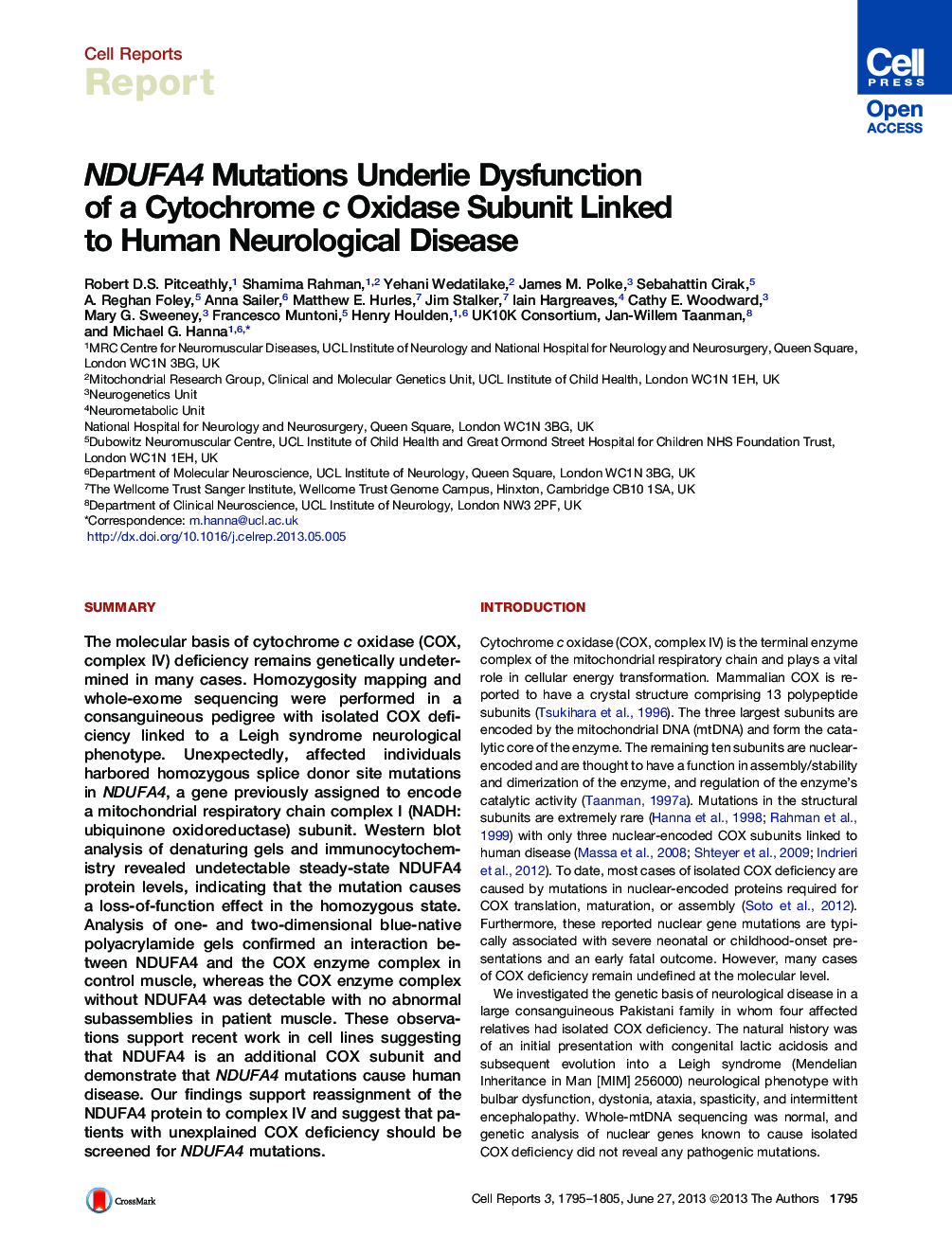| Article ID | Journal | Published Year | Pages | File Type |
|---|---|---|---|---|
| 2040159 | Cell Reports | 2013 | 11 Pages |
•Mutations in NDUFA4, assigned to encode a complex I subunit, cause human COX deficiency•Confirmed interaction between NDUFA4 and the COX holoenzyme in control muscle•The COX holoenzyme without NDUFA4 is detectable with no abnormal subassemblies in patient muscle•NDUFA4 is essential for complex IV activity, but is not required for assembly of the COX holoenzyme
SummaryThe molecular basis of cytochrome c oxidase (COX, complex IV) deficiency remains genetically undetermined in many cases. Homozygosity mapping and whole-exome sequencing were performed in a consanguineous pedigree with isolated COX deficiency linked to a Leigh syndrome neurological phenotype. Unexpectedly, affected individuals harbored homozygous splice donor site mutations in NDUFA4, a gene previously assigned to encode a mitochondrial respiratory chain complex I (NADH:ubiquinone oxidoreductase) subunit. Western blot analysis of denaturing gels and immunocytochemistry revealed undetectable steady-state NDUFA4 protein levels, indicating that the mutation causes a loss-of-function effect in the homozygous state. Analysis of one- and two-dimensional blue-native polyacrylamide gels confirmed an interaction between NDUFA4 and the COX enzyme complex in control muscle, whereas the COX enzyme complex without NDUFA4 was detectable with no abnormal subassemblies in patient muscle. These observations support recent work in cell lines suggesting that NDUFA4 is an additional COX subunit and demonstrate that NDUFA4 mutations cause human disease. Our findings support reassignment of the NDUFA4 protein to complex IV and suggest that patients with unexplained COX deficiency should be screened for NDUFA4 mutations.
Graphical AbstractFigure optionsDownload full-size imageDownload as PowerPoint slide
